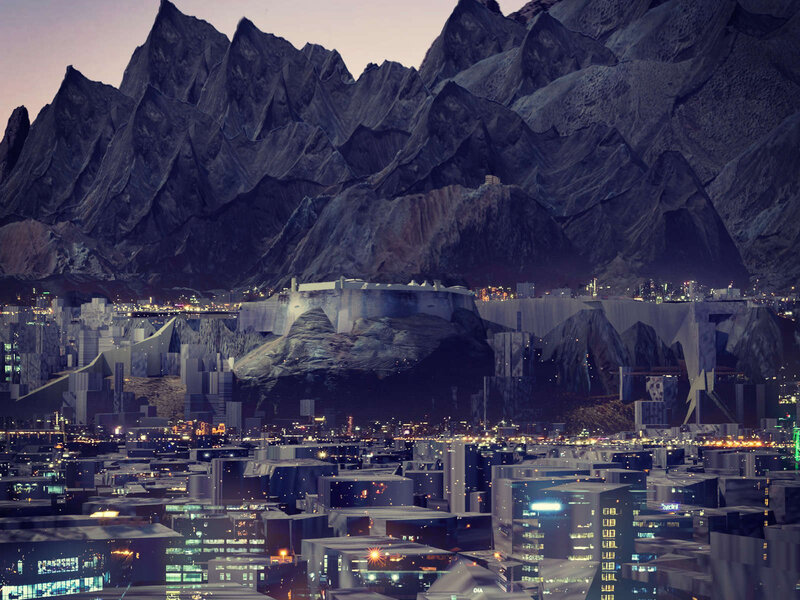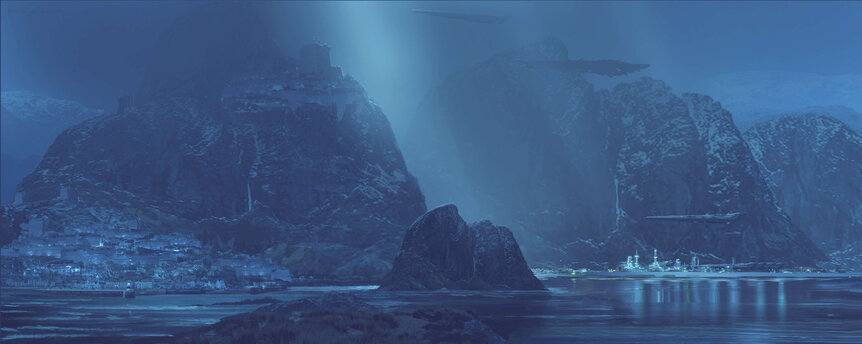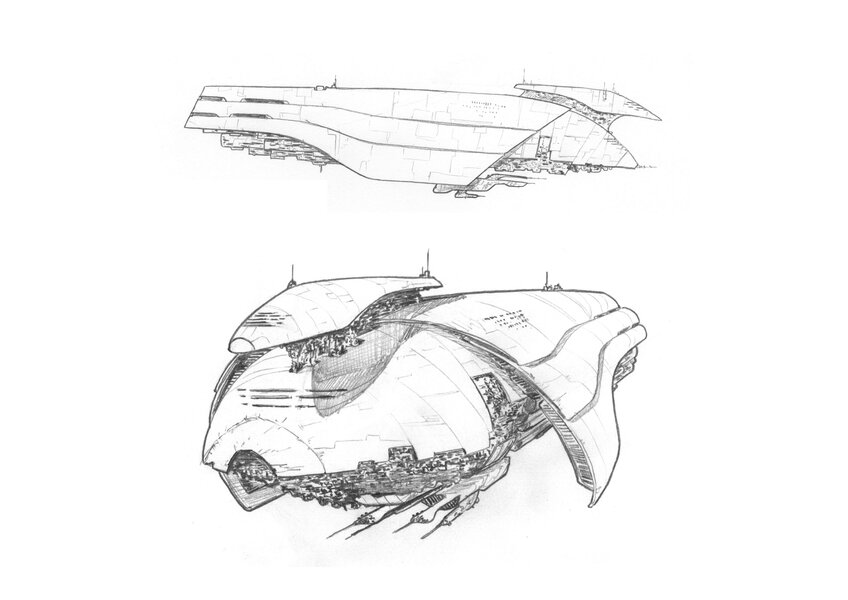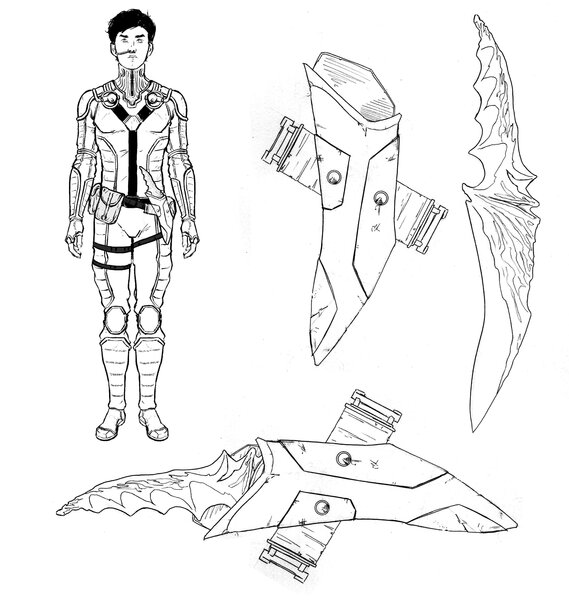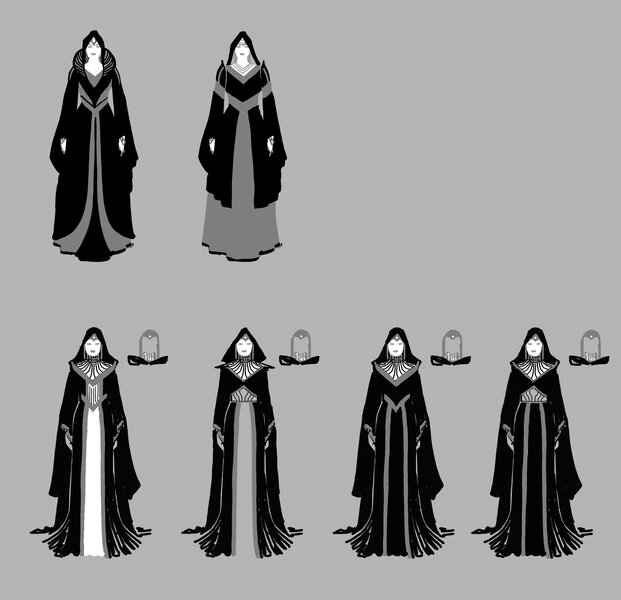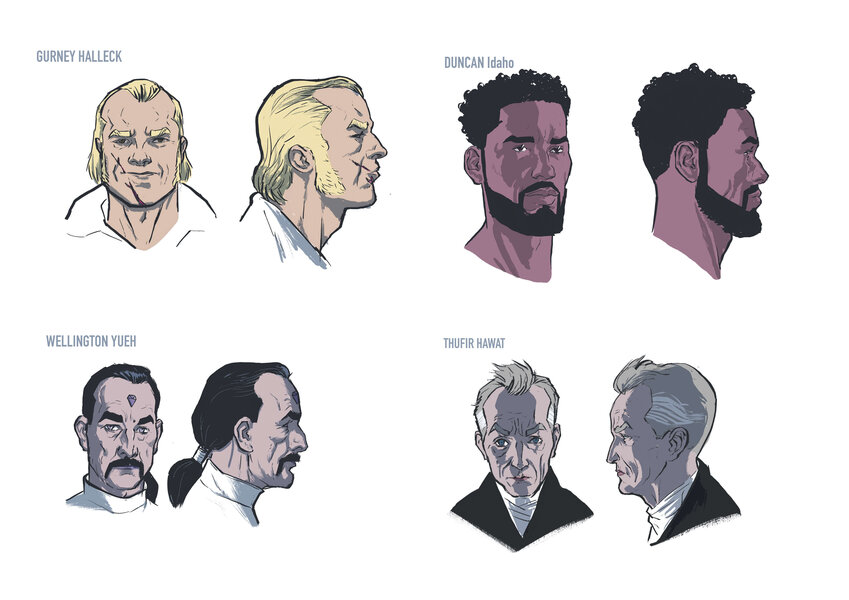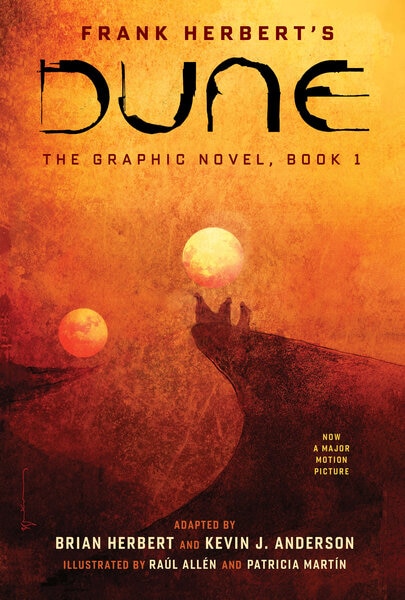Create a free profile to get unlimited access to exclusive videos, sweepstakes, and more!
No Dune movie? No problem! Head to Arrakis in our exclusive first look at Dune: The Graphic Novel Vol. 1
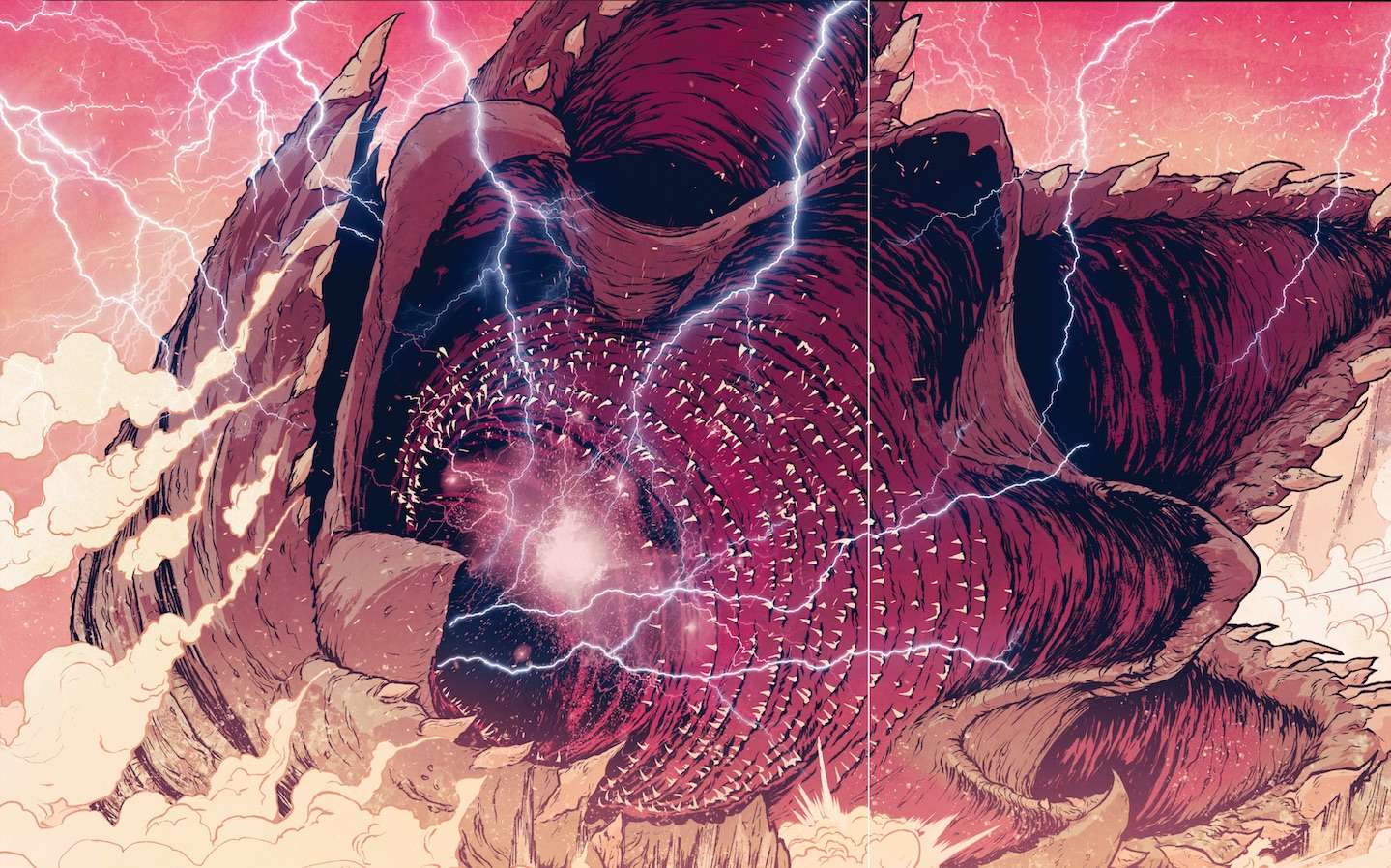
Last month, Dune acolytes were crestfallen after learning that Denis Villeneuve's blockbuster film adaptation of Frank Herbert's seminal sci-fi novel was being delayed to next year. Fans won't be heading to Arrakis in movie theaters anytime soon, but they can still get a hit of spice and sandworm action in Abrams Books' new graphic-novel interpretation of the iconic source material. After some haggling with the Fremen, SYFY WIRE was able to acquire a slew of early concept art drawn by the comic's illustrative team of Raúl Allén and Patricia Martín. Both artists began working on this project as Spain went into lockdown during the early days of the coronavirus pandemic.
"Since we could not leave the house, the only thing we could do was work, work, work... And all of a sudden, without us realizing it, the book was done," Martín (who was in charge of layouts, inking backgrounds, color palettes, and lettering) tells SYFY WIRE.
"While Patricia was working on translating the script into the visual layouts, I was developing concept art along with [concept artist Alex Jay Brady], who brought her incredible vision on cityscapes and vehicles, and then with David Astruga to generate many iterations of the designs of characters," adds Allén, who oversaw the penciling and inking of the characters. "With Patricia’s layouts, we then jumped into a more elaborate sketch of every page, taking into consideration every element, that meant having the lettering already in place."
In terms of diving into the novel for reference, Martín confesses that they "both lost count" on how many times they went back and re-read it. "Raul likes to have the audiobook playing while working and I would not be surprised if he had it while sleeping...," she says.
Multiple readings were also in order for co-writers Kevin J. Anderson and Brian Herbert (son of the original author). The creative duo are known for penning the 1999 prequel novel Dune: House Atreides.
"Dune made such a tremendous impact on us (over multiple re-readings) and conjured indelible pictures in our minds. We’ve always thought it would be a perfect fit for a graphic adaptation," Anderson says. "We did this project as a literal, definitive adaptation of Frank Herbert’s novel, scene-by-scene — not a looser 'adaptation' where we felt we could move things around and change things. But Frank Herbert wrote a novel that is very information-dense at times, visually static as the larger concepts are introduced. But we, and our great artists ... found ways to keep it fresh and appealing on the comics page."
Allén and Martín were guided by Anderson and Herbert's script, but fortunately, they didn't have to draw every event from the nearly 1,000-page tome for this project. Book 1 only features a concentrated segment of the novel's overall story. The writers had final say on the visuals, but once they provided the green-light, the artists were off to the races.
"We could start penciling in backgrounds and shooting references for the characters using the developed layouts as a guide. Using photo references is an additional step, but one that allows me to get more nuances and subtleties in the gestures and poses. It also makes the process a lot more fun. With that additional support, I pencil the characters," Allén says. "I also built some of the backgrounds in 3D since they were the settings of longer scenes and that allows me to get consistency and also look for more interesting camera angles, kind of like in pre-visualization in movies."
Martín describes their Dune aesthetic as "a continuation of our comic work on titles like Wonder Woman or Secret Weapons with Eric Heisserer. It is heavily influenced by American comics but also a lot European comics, with clean lines and less use of heavy blacks."
"Frank Herbert, a professional photographer at one time, wrote the scenes in his classic novel, Dune, very visually, making them readily adaptable to both film and graphic novels," Brian Herbert says. "And beyond that, we have been blessed to have Kevin J. Anderson involved, with his wealth of earlier comic and graphic novel projects."
Despite being the son of the legendary Frank Herbert, Brian eschews the title of "Dune scholar" we try to bestow upon him: "It’s nice of you to put it that way. The sheer volume of details in the Dune series, and the exacting nature of hardcore Dune fans, made it necessary for me to really do my homework before committing any new words of fiction to paper. Before writing Dune: House Atreides with Kevin, I spent five years researching the writings and lifetime events of my father."
"Frank Herbert himself was the most intimidating challenge," Anderson explains. "Just reading the original Dune novel (and all of Frank’s other novels), gives only a glimpse of how many things he had in his head. Brian and I have both studied the originals many times, and still find new details and subtle nuances in the many layers. We talk constantly and compare notes, doublecheck each other, and make sure our own details fit."
"For me, the easiest was the flowers in the conservatory, I love plants and drawing them, so this quickly became one of my favorite scenes," Martín says when asked about the most fun and challenging aspects of the project.
"I had a lot of fun drawing Lady Jessica and Dyke Leto, but besides that, I would put everything in the most challenging category," Allén says.
When the first trailer for Villeneuve's movie was released in September, Allén purposefully avoided it, so as not to be influenced by its style. However, he admits that "the type treatment of the title blew me away."
Martín, on the other hand, did check out the first batch of footage: "I was amazed by the visual re-imagining of Villeneuve’s film. I almost cried when I first saw the trailer. I love everything Villeneuve does and his adaptation will be no exception."
Brian goes on to promise that "the new graphic novel, with its fantastic illustrations, are like a still-life version of a movie, one visual frame after another. Fans will love to read our graphic novel version, then see the movie, and compare the two different approaches."
"This visual interpretation was done independent of the film, so it’s entirely what we and the artists developed for our own cinematic vision," Anderson adds. "Again, this graphic novel is adapted from the original novel and not the movie script. So, readers will see the movie on the page."
"I have often told casual fans that reading the novel Dune is the best starting point, but that there are numerous other starting points in the Dune universe for anyone not familiar with, or only casually familiar with, the Dune series novels or previous movie and television film projects," Brian says. "I’ve told new fans that they could first watch those films, or first read our prequel and sequel novels, or — preferably — they could read [the original novel]. Now there is a new starting point, our definitive graphic novel version of Dune, bringing the classic scenes to life in illustrated form."
Looking back even further, we ask if David Lynch's 1984 movie version (now a cult classic) had any bearing on their work for this comic.
"My brother and a friend played it for me when I was six, I was pretty shocked. They were hardcore sci-fi fans and if I got into comics it is because of them," Allén admits.
"I love Lynch, but there is something about his adaptation that I have never been able to connect with," Martín says.
"We always recommend that readers should go to the original novel," Anderson says. "But, because this graphic novel so closely follows the novel, this will be a good introduction to the detailed story. For readers who have read Dune, this will let them revisit the great novel."
Due to the extraordinary time crunch on the graphic novel, Allén and Martín received some back-up assistance from Jesus R. Pastrana (backgrounds), Guillermo Ortego (inking), Monica Jaspe Garcia, Borja Pindado, and David Astuga (the latter three helped with coloring).
"It’s exciting to see Dune on the cusp of becoming a full-fledged franchise of books, movies, television, graphic novels, comics, and games, making Dune available to even more fans than the enthusiastic fan base we already have," Brian admits. "All the while we are adhering carefully to the Dune canon that Frank Herbert originally laid out. That leaves us with plenty of elbow room for new stories, without needing to expand much beyond his original vision."
And how would his dad feel about this new take on his classic novel?
"He would absolutely love it, especially because we are following his novel so closely, scene by scene, with authentic visual depictions and dialogue," Brian says. "Frank Herbert would be heartened to learn that Dune fans will be able to find their favorite parts in both his original novel, and in the new graphic novel as well."
Dune: The Graphic Novel Vol 1. goes on sale next Tuesday, Nov. 24. You can pre-order a copy on Amazon right here. Book 2: Muad'Dib arrives in Spring 2022. In the meantime, you can check out some previously-released interior pages in the media gallery below.
